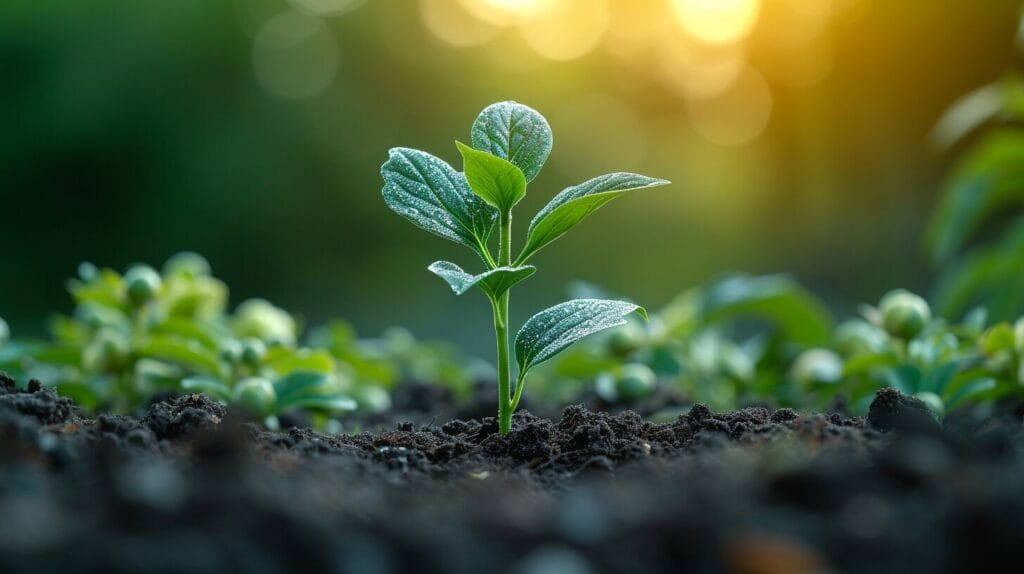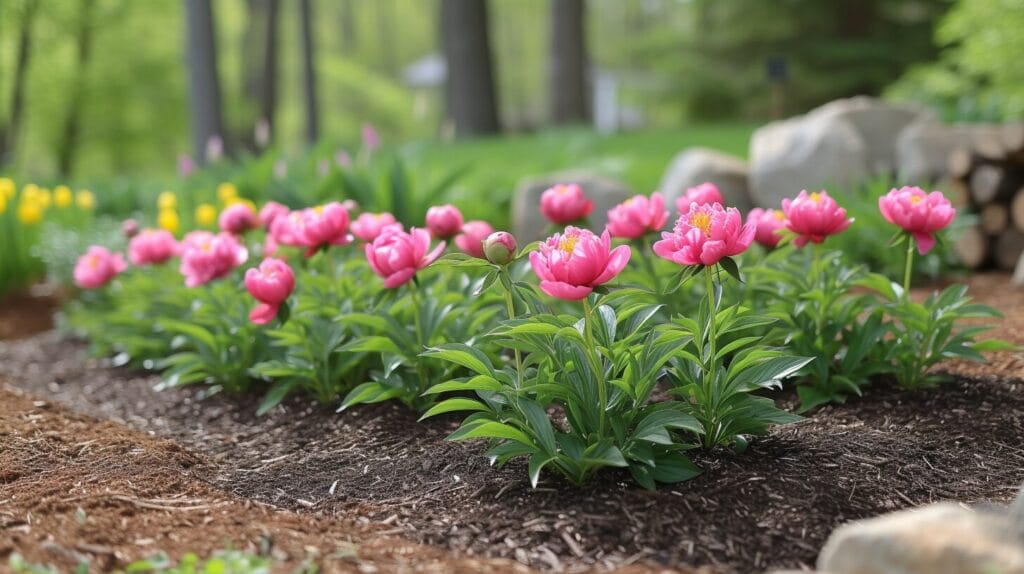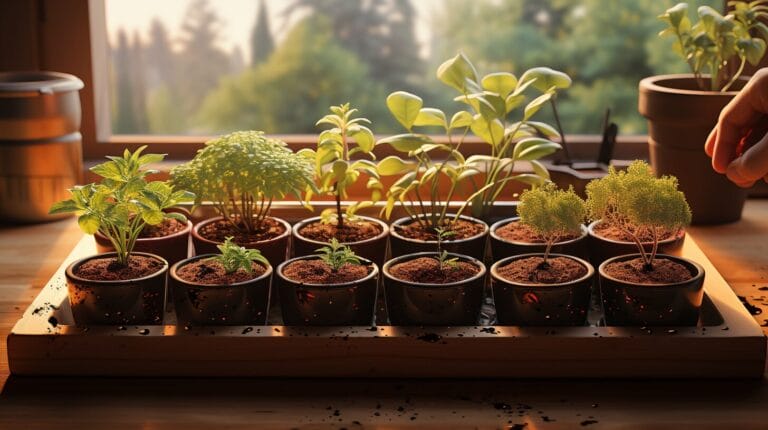We are thrilled to introduce our manual on cultivating peonies. The primary focus will be to illuminate the initial year of growth for these breathtaking blooms. As seasoned horticulturists, we thoroughly enjoy the gratification derived from successfully nurturing peonies.
We’ll guide you through each step, from planting bare-root peonies to nurturing their growth and ensuring their long-term health. Let’s dig in and discover the secrets behind the first-year growth cycle of peonies, and uncover the beauty that awaits. Uncover the beauty that awaits as we explore the impact of sustainable gardening with milk jugs. By incorporating this eco-friendly practice, not only will you help the environment, but you’ll also contribute to the longevity of your peonies. Join us as we delve into the world of peony cultivation and sustainable gardening with milk jugs.
Key Takeaways
- Choosing the right peony plant for your garden is crucial.
- Plant bare-root peonies in the fall or early spring.
- Ensure your garden has sunny areas with well-draining soil.
- Regular watering, fertilization, and creating a strong foundation for future blooming seasons are essential.
Understanding the Basics of Growing Peonies in the First Year

Cultivating peonies relies first on selecting suitable plants for your climate, and then correctly planting them in sunny, well-drained, slightly acidic soil. After thoroughly watering newly planted roots, consistent moisture without saturation is maintained during growing seasons.
Once buds appear, staking stems maintain an upright presentation of gorgeous blooms. Finally, leaving post-bloom foliage until fall nurtures roots before dividing plants for future abundance. Following these basic best practices sets up success with peonies year after year.
The Initial Growth Stages of a Peony Plant in the First Year

After understanding the basics of growing peonies in the first year, it’s time to explore the initial growth stages of a peony plant. From bud break to foliage development and root nourishment, it’s crucial to understand these stages for a peony plant’s overall development.
The Exciting Process of Peony Bud Formation and Development

During the early stages of a peony plant’s growth, the buds begin to form and develop. Peony buds go through several growth stages before they bloom into full-fledged flowers. Ensuring the plant receives adequate sunlight, water, and nutrients is essential for optimal bud formation and development.
Anticipation and Delight: The Blooming of Peony Flowers

After nurturing them through the growing season, it’s truly a joy to see the flowers come to life. The blooming of peony flowers is a culmination of our efforts and a reward for our care and patience. It’s a reminder of the beauty that can be cultivated through nurturing and dedication.
Are Different Color Varieties of Peonies Part of the First-Year Growth Cycle?
Yes, different color varieties of peonies are part of the first-year growth cycle. As peonies mature, new colors and shades emerge. To explore peony colors 2024, consider selecting a variety that suits your garden’s aesthetic. The vibrant range of colors is a delightful addition to any landscape.
How Can the ZZ Plant’s Scientific Name Discovery Help in the Growth of Peonies?
The zz plant scientific name revealed, Zamioculcas zamiifolia, may provide insights into peony growth. Both plants have specific needs, and understanding ZZ plant’s scientific name may offer clues about soil conditions, light requirements, and watering that could benefit the growth of peonies.
Caring for the Peony Plant After Blooming and Preparing for the Next Year

After the beautiful display of flowers, it’s important to give the peony plant some attention to ensure its health and vitality. One essential task is deadheading, which involves removing the spent blooms.
This not only keeps the plant looking tidy but also prevents the production of seeds, allowing the plant to direct its energy towards root development instead.
As the end of the growing season approaches and winter looms, it’s important to prepare the peony plant for its dormant period. Before the first frost, cut the stems back to about two inches above the soil line.
Conclusion
In conclusion, growing peonies in the first year requires careful attention to planting, watering, and providing the ideal conditions for their growth. It’s important to support the blooms and know when to cut peonies for cut flowers.
Dividing peonies in the fall and leaving the foliage in the garden after blooming also contribute to long-term success. With patience and proper care, your peonies will thrive and bring you joy for years to come. Happy gardening!
Frequently Asked Questions
What are peonies?
Peonies are perennial flowering plants known for their large, showy, and fragrant blooms. They are popular for their ease of growth and are a favorite in many gardens.
When is the best time to plant peonies?
The best time to plant peonies is in the fall, preferably in late September or early October. This allows the plant to establish its root system before the ground freezes.
How do I care for the first year Peony Growth Circle?
During the first year, water the peonies regularly, especially during dry spells. Remove any weeds around the base of the plant and add a layer of compost to nourish the soil.
Do peonies need a lot of sun?
Yes, peonies thrive in full sun, which means they need at least 6 hours of direct sunlight each day to bloom profusely.
Can I cut and bring First Year peony growth cycle?
It’s best to leave the blooms on the plant during the first year to allow the plant to strengthen. However, if you choose to bring them inside for a vase, ensure to leave several leaves on the plant to support its growth.







